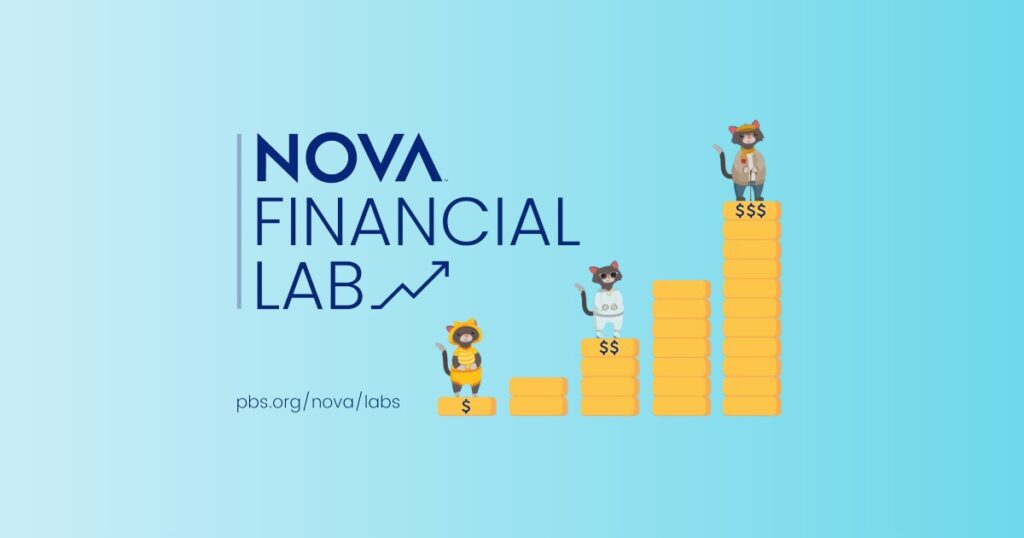
Grades 9-12

Don't have an account yet? Sign up for free
Don't have an account yet? Sign up for free


College costs have escalated over the past two decades, and many students are relying on student loans to cover the costs. So it is more important than ever to carefully consider the costs of college, anticipated career income, and how to best finance those college expenses. Students must consider the costs beyond tuition, room and board, and books, in order to get a more realistic estimate of total college expenses. In this lesson, students will research the cost of attending two colleges of their choice and learn about hidden costs that are often overlooked when preparing a budget for college.
So you are ready to start looking at colleges. Congratulations! You may have dreams of becoming a writer, a welder, a politician, a musical instrument repair technician, or a scientist – or maybe you haven’t a clue what you are looking for in a career. Your choice of the right college – and how to finance your education – will have ramifications for your career and the rest of your financial life.
College costs have escalated over the past two decades, and many students are relying on student loans to cover the costs. Therefore, it is more important than ever to carefully consider and study the costs of college, anticipated career income, and how to best finance those college expenses. In order to get a more realistic estimate of total college expenses, consider the costs beyond tuition, room and board, and books. In this lesson, students will research the cost of attending two colleges of their choice and learn about hidden costs that are often overlooked when preparing a budget for college.
1. Tell the students that this is the first of two related lessons (the second is How Will I Pay for College? ). Tell the students they will need to research the costs for different colleges before deciding where to enroll. Of course, students should consider the academic program, the quality of professors, the preferred size of the school, distance from home, career placement rate, likelihood of graduating on time, and other important criteria. However, the cost can often be the deciding factor in selecting a college.
It is important to remember that tuition is not the only cost of college. Often, the costs of room and board in a dormitory can outweigh tuition. There are other costs that colleges add to the bill to cover technology, health care, construction projects, parking, and other expenses. And then, of course, there are the costs of maintaining a social life. If hidden costs such as transportation are overlooked, it is more difficult to plan for college expenses. Accurate comparisons of schools require a review of the hidden costs of higher education.
2. Give the students 5-10 minutes to work in small groups to brainstorm some of the costs that they may encounter, which are not included in the “sticker” price of their school (published tuition and fees). If students have trouble getting started, ask them if they plan to go to school in another state and go home to visit family on holidays, or what sort of social life they expect to have. Then show them the Hidden Costs of College worksheet, pointing out costs they might not have considered, such as laundry, transportation, inflation, or changing majors. The worksheet can be found at: https://www.edvisors.com/plan-for-college/money-saving-tips/beware-of-hidden-college-costs/ .
3. Show students this actual bill for Emily, who attends a major state university as an in-state student.
| Full-Time Tuition | $ 9,087 |
| Dormitory (Double Room) | $ 6,545 |
| Meal Plan (Standard) | $ 3,250 |
| Activity Fee | $ 198 |
| Technology Fee | $ 395 |
| Student Health Fee | $ 220 |
| Transportation Fee | $ 128 |
| Repair and Rehabilitation Fee | $ 360 |
| Total | $20,183 |
By focusing only on tuition, Emily would have missed more than half of the cost of one year of college. Then there are the costs specific to the academic program the student chooses. Count on $1,000 or more per year for textbooks. Students may also face lab fees, instrument rental, supply charges, parking fees, and other costs for classes. If the student attends school out of state, expect the tuition to double or triple. Beware of penalties that can add up; Emily faced a $70 fee for registering for classes after the deadline and an additional $17 for dropping a class. Some colleges even charge a fee for paying by credit card rather than check.
Ask the students to calculate the percentage of the total cost that Emily will spend on the dormitory. [6,545 / 20,183 = 32%]
Now ask the students to estimate some of the hidden costs Emily might need to add to her cost of attending college for one year. Are these hidden costs more than $1,000 per year? [Answers may vary]
4. Now let’s look at Josh’s college costs. Josh is attending a community technical college and will be living in an apartment. Consider his actual bill.
| Full-Time Tuition | $ 5,744.64 |
| Apartment (One Bedroom with Roommate) | $ 4,500.00 |
| Food and Utility Expenses | $ 2,700.00 |
| Building Fee | $ 135.64 |
| Service and Activities Fee | $ 155.00 |
| Comprehensive Fee | $ 9.00 |
| Security Fee | $ 9.00 |
| Technology Fee | $ 3.00 |
| Additional Program Fee | $ 300.00 |
| Required Tools | $ 3,500.00 |
| Total | $17,056.28 |
While Josh’s tuition at the technical school is significantly lower than Emily’s at the major state university, Josh faces the cost of tools. Apartment rental and food costs can vary widely among regions of the country. One other obvious consideration is how many years the student expects to remain in school to achieve the desired certification or degree. While some technical programs require only months or a year, advanced degree programs may require many years of school. And many students take five or more years to complete a four-year degree program. Other students will begin their studies at a community college and later transfer to a four-year college. It is very important to consider all of the costs in making a choice of colleges and universities.
Now ask the students to calculate Josh’s tuition for the second year if the school increases tuition by 5%. [($5,744.64 * .05) + $5,744.64 = $6,031.88]
5. Tell the students they will now have an opportunity to look at the costs to attend two colleges or universities they would consider attending. Visit the college’s website or go to https://nces.ed.gov/collegenavigator/ to look up tuition and fees (Type in the name of the school you are interested in attending. Click on Tuition, Fees and General Expenses). Use the information to complete the center column of the table below. Then use the same procedure to find a second school and put the information in the right column of the table.
Inform the students that the “sticker” price of the college is not what most students actually pay. The average net price that students pay is usually substantially lower because many students receive financial aid (the College Navigator website has estimates for net price paid by income level: Click on Net Price for more information). For the purposes of this lesson, however, we will use the sticker price because the net price depends on a number of variables such as family income and number of siblings in college.
|
Name of School |
|
|
|
Full-Time Tuition |
|
|
|
Housing Costs |
|
|
|
Meal Plan |
|
|
|
Other Fees and Hidden Costs |
|
|
|
Textbook Costs |
|
|
|
Estimated Total Annual Cost |
|
|
Students will most likely be surprised by the cost of college. Students will realize that their families may not have enough cash on hand to pay these bills. Now that they have information about the costs of college, they’ll need to consider how to finance their education, which is the focus of the next lesson, How Will I Pay for College?
Parents and students must sit down and research ALL the costs of attending college, not only tuition and room and board. Having a realistic idea about the actual costs is the first step toward creating a workable plan for financing a college education.
Students can work with their parents to calculate the estimated net price of attending college. The College Board Net Price Calculator at https://professionals.collegeboard.org/higher-ed/financial-aid/netprice/participating-schools?excmpid=mtg382-st-1-mat bases the estimates on parents’ financial records, test scores, and GPA. Please note that not all schools participate in the Net Price Calculator.
1. Ask students to refer to the table they completed in Procedure 5.
2. Explain the concept of Opportunity Cost and model how to use a five-step decision-making grid to decide where to go to college. The Decision Making lesson from Financial Fitness for Life provides background information for the teacher and Exercise 3.2 provides students with practice using the decision-making grid. The steps in the decision-making process are as follows:
a. Define the problem.
b. List your alternatives.
c. State your criteria.
d. Evaluate your alternatives.
e. Make a Decision
3. Students will then use the blank decision-making grid to list their alternatives, state their criteria, and evaluate their alternatives to make a decision about which college they should attend.
4. After completing the decision-making grid, ask the students to write a paragraph explaining which college seems to be a better value. Then ask the students to write a second paragraph, explaining why a student might choose a school whose "sticker" price does not appear to be a better value.

Grades 9-12

Grades 9-12

Grades 9-12

Content Partner
Grades 6-8, 9-12
